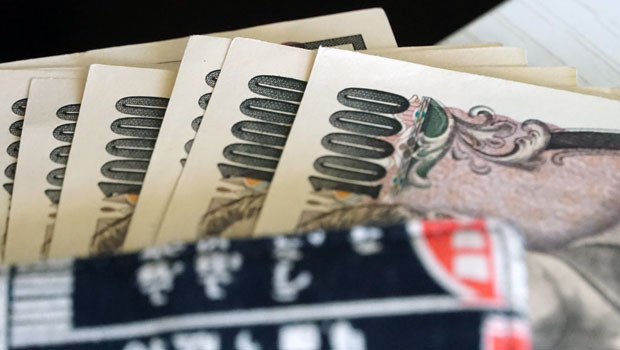Asia report: Markets fall as Japan revises GDP growth downwards

Markets in the Asia-Pacific region faced a downturn on Friday with various indices reflecting the unease.
The descent was underpinned by Japan's latest announcement concerning its revised second-quarter gross domestic product data.
“The selloff in the Japanese yen slowed against the dollar,” said Swissquote Bank senior analyst Ipek Ozkardeskaya.
“The USD-JPY pushed below the 147 mark this morning, despite a slower than expected GDP print in Japan in the second quarter.”
Ozkardeskaya noted that capital expenditure fell 1% and private consumption declined 0.6%, making the case for a softer Bank of Japan more plausible.
“But Japanese officials dared traders to continue buying the USD-JPY to 150, saying that they would intervene.”
Markets across region stumble as Japan releases revised GDP
Japan’s key stock indices, the Nikkei 225 and Topix, fell by 1.16% and 1.02% respectively, putting the Nikkei 225 at 32,606.84 and the Topix at 2,359.02.
Leading the downturn on Tokyo’s benchmark were CyberAgent, down by 6.83%, followed by Mitsui Engineering & Shipbuilding and Olympus Corporation, declining by 4.24% and 3.86% respectively.
In China, markets showed a moderate decline, as the Shanghai Composite dropped by 0.18% to close at 3,116.72, while the Shenzhen Component was down 0.38% at 10,281.88.
Eastern Pioneer Driving School's shares plummeted by 10.02% in Shanghai, and Grace Fabric Technology followed closely, losing 9.99% of its value.
Trade in Hong Kong faced an unprecedented disruption, with the entire day's trading being cancelled due to a 'black rainstorm' warning.
It came as the city grappled with its heaviest rainfall in 140 years.
The Kospi in South Korea saw a marginal drop of 0.02%, settling at 2,547.68.
Major decliners in the Seoul market were SKC, down 5.4%, and SK Hynix, which decreased by 4.05%.
Down under, the S&P/ASX 200 index dropped slightly by 0.2% to 7,156.70.
Leading the losses were Mineral Resources and Summerset Group Holdings, with their shares falling by 3.75% and 3.54% respectively.
In New Zealand, the S&P/NZX 50 reflected a more pronounced dip of 0.72%, landing at 11,344.11.
Fisher & Paykel Healthcare and Restaurant Brands New Zealand were the top laggards, recording decreases of 2.85% and 2.71% respectively.
In currency markets, the dollar was last 0.03% stronger on the yen, trading at JPY 147.35.
The greenback was meanwhile weaker against the Aussie and Kiwi dollars, falling 0.2% on the former to AUD 1.5652, and decreasing 0.47% against the latter to change hands at NZD 1.6940.
In oil markets, both Brent crude and West Texas Intermediate showed modest declines, with Brent crude futures last down 0.1% on ICE at $89.83 per barrel, while the NYMEX quote for West Texas Intermediate fell 0.24% to $86.66.
Japan's economic growth slows; Philippine trade deficit widens
In economic news, Japan's economy in the second quarter showcased a growth rate that fell short of prior expectations.
Detailed figures revealed a 4.8% expansion on an annualised basis - a significant deceleration from the initial estimate of 6% declared in August.
Moreover, the numbers trailed behind the anticipated 5.5% growth that economists surveyed by Reuters had predicted.
Delving deeper, the nation's second quarter GDP ascended by 1.2% when considered on a quarter-on-quarter perspective.
That was also slightly off track when compared to the 1.5% surge documented in preliminary reports and the 1.3% projected growth based on the Reuters poll.
“The data revision today revealed that the fragility of the recovery, together with the conspicuous fall in real wages, warrant a loose monetary stance in the near term,” said Kelvin Lam at Pantheon Macroeconomics.
“Indeed, the BoJ will be mindful of the deterioration in wage growth, and will likely affect its view on whether the current accommodative policy settings and plans are appropriate to make sustainable wage rises.”
Lam said that on the fiscal front, prime minister Fumio Kishida also said earlier in the month that the government would accelerate plans for more stimulus to support the economy from rising inflationary pressure.
“As a result, we continue to expect the BoJ to keep its monetary policy loose for the rest of the second half, aiming to phase out the yield curve control gradually, while holding the policy rate steady at -0.10%.”
Meanwhile, the Philippine economic landscape reflected mounting challenges in its trade sector.
The country's trade deficit in July surged to $4.2bn, marking an increase from June's $3.9bn.
That upswing in the deficit was attributed to a mix of declining exports and plunging imports.
Exports in July regressed by 1.2% on a year-on-year basis, contrasting the 0.9% growth observed in June.
On the import side, the country experienced a sharp 15.3% year-on-year decline in July, a slightly deeper contraction than the 15.0% downturn in June.
Notably, the cumulative external trade in goods for the Philippines during July amounted to $16.49bn, reflecting a decline of 10.5% when viewed year-on-year.
Reporting by Josh White for Sharecast.com.